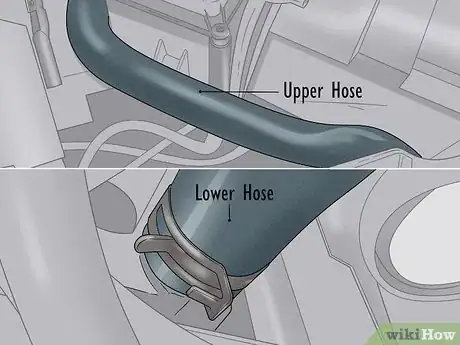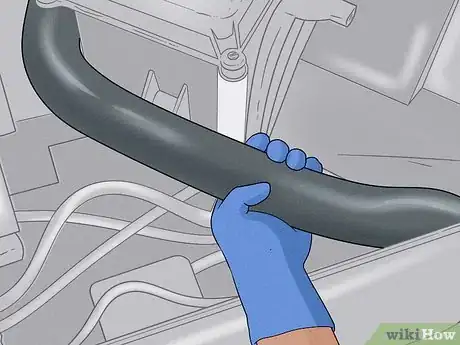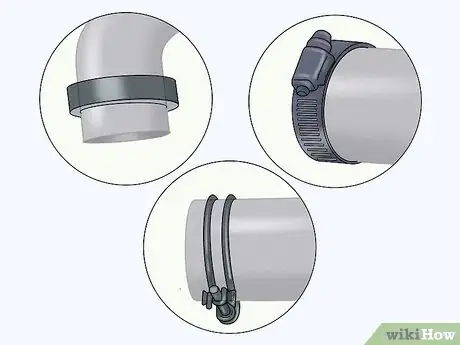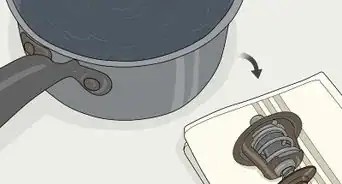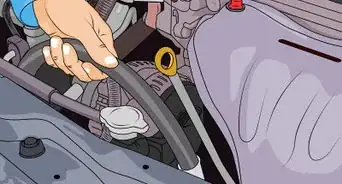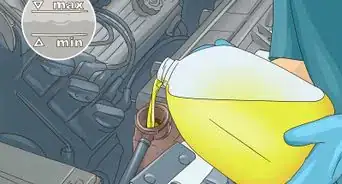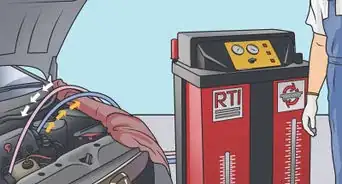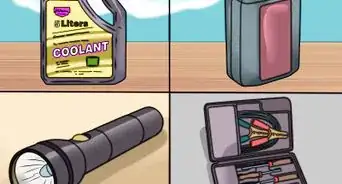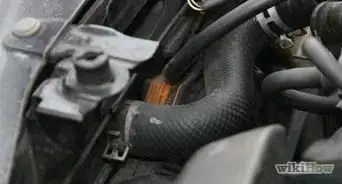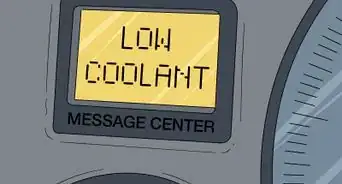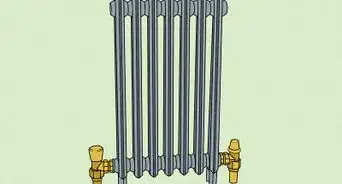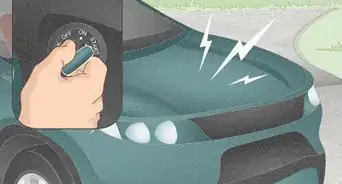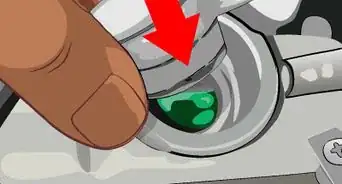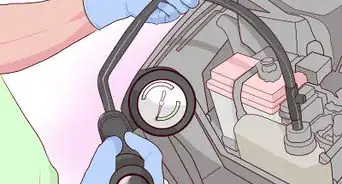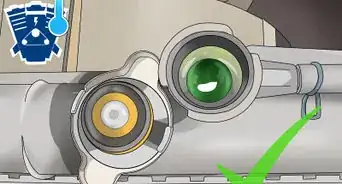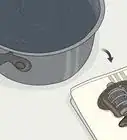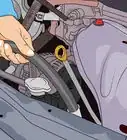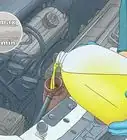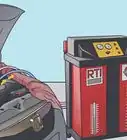This article was co-authored by wikiHow Staff. Our trained team of editors and researchers validate articles for accuracy and comprehensiveness. wikiHow's Content Management Team carefully monitors the work from our editorial staff to ensure that each article is backed by trusted research and meets our high quality standards.
This article has been viewed 187,669 times.
Learn more...
When doing routine car maintenance on your vehicle, you should remember to perform a radiator hose inspection in addition to checking the oil, tires, brakes and other safety devices. The radiator is one of the most important devices in your car because it keeps the engine at its nominal operating temperature, which is typically between 195 and 220 degrees Fahrenheit (90 and 105 degrees Celsius).[1] Radiator hoses circulate coolant from the radiator to parts of the engine that need to stay cool. Over time, radiator hoses can weaken. If they are not replaced when necessary, they can completely collapse, causing the engine to overheat and unable to run. In extreme cases, a collapsed hose can cause the engine to burst. This article covers how to check radiator hoses, which may help you keep your engine from overheating.
Steps
-
1Find both of your radiator hoses.[2] One reason radiator hoses are overlooked during a routine car inspection is that the hoses can be difficult to reach.
- The upper radiator hose runs from the radiator to the motor. You can usually see most of this hose.
- The lower radiator hose is harder to find. To locate it, get underneath the car and look for a smaller diameter hose leading from the radiator into the heat wall of the car.
-
2Visually inspect each radiator hose. Hoses should not be swollen or cracked, both of which could lead to a failure.[3]Advertisement
-
3Perform a squeeze test.[4] While the engine is warm after a drive, squeeze the radiator hoses, paying particular attention to areas where the hose bends.
- A radiator hose in good condition should feel firm, but not hard.
- A radiator hose in poor condition feels very hard, spongy, or soft. You may find a single soft spot as opposed to the entire hose being soft. A soft hose or a hose with a soft spot should be replaced.
-
4Check the clamps that connect the hose to the radiator and the engine. There are 3 different types of radiator hose connections, gear clamps, banded clamps and wire clamps.
- Gear clamps, which are sometimes called worm clamps, and banded clamps, which are also called screw clamps, are typically made of stainless steel and wrap around the hose. You adjust these types of clamps with a screwdriver.
- Wire clamps are adjusted with a pair of hose clamp pliers. You can recognize these clamps because there is no screw keeping them tight.
Community Q&A
-
QuestionWhat can cause the top of the radiator hose to become swollen and the heat to no longer work?
 Community AnswerThe hose might have burst internally and if the coolant leaked or can't flow through properly, you could be running without enough coolant to run the heat. If so, you should replace the hose and replace your coolant.
Community AnswerThe hose might have burst internally and if the coolant leaked or can't flow through properly, you could be running without enough coolant to run the heat. If so, you should replace the hose and replace your coolant. -
QuestionWhy would the lower hose be cool, but the top hose hot?
 Community AnswerYour thermostat controls coolant going to your lower hose. Either your engine has not reached sufficient temperature for the thermostat to operate, or your thermostat has gone bad and no longer operates properly. If your temperature gauge is past its normal point (about half way) and the bottom hose is still cold, fair chance your thermostat is bad.
Community AnswerYour thermostat controls coolant going to your lower hose. Either your engine has not reached sufficient temperature for the thermostat to operate, or your thermostat has gone bad and no longer operates properly. If your temperature gauge is past its normal point (about half way) and the bottom hose is still cold, fair chance your thermostat is bad. -
QuestionWhy is the top hose on my car very hard when it has been running for an hour or so?
 Community AnswerThis is perfectly normal. When your engine is at normal operating temperature, your cooling system is under pressure. The pressure in your system is limited by the radiator cap, usually around 15 psi. The hose feels hard because it is holding back the pressure in your cooling system. This is why you should periodically check the condition of the hoses.
Community AnswerThis is perfectly normal. When your engine is at normal operating temperature, your cooling system is under pressure. The pressure in your system is limited by the radiator cap, usually around 15 psi. The hose feels hard because it is holding back the pressure in your cooling system. This is why you should periodically check the condition of the hoses.
Warnings
- Never remove a hot radiator cap. Pressure built up inside the radiator can cause boiling coolant to gush out of the radiator, causing severe burns.[5]⧼thumbs_response⧽
Things You'll Need
- Flashlight, for inspecting the hoses underneath the engine
- Screwdriver, for tightening clamps, if necessary
- Hose clamp pliers, for adjusting wire clamps, if necessary
References
- ↑ https://www.cars.com/articles/should-i-worry-about-how-hot-my-engine-is-running-1420680334271/
- ↑ http://knowhow.napaonline.com/4-signs-of-a-bad-radiator-hose/
- ↑ https://www.consumerreports.org/car-repair-maintenance/how-to-inspect-car-belts-and-hoses/
- ↑ https://youtu.be/a3TY_g85US0?t=32
- ↑ http://www.dmp.wa.gov.au/Documents/Safety/MSH_SIR_080.pdf
- http://community.cartalk.com/discussion/2155496/radiator-hoses-and-thermostat
